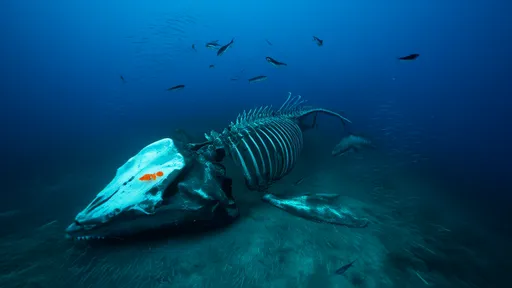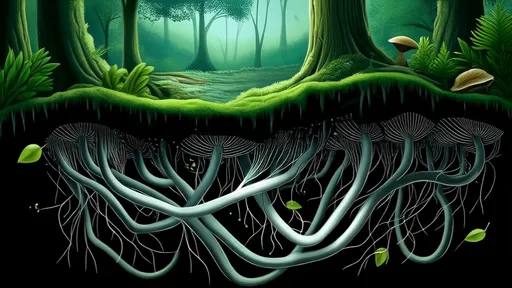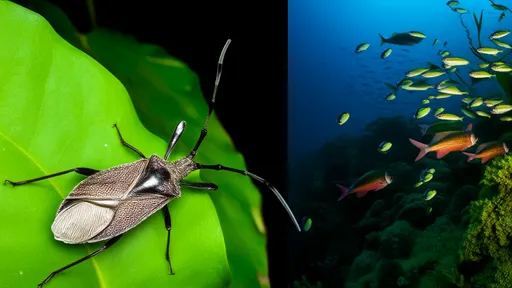The mystery of migratory birds and their extraordinary navigation abilities has long fascinated scientists and nature enthusiasts alike. How do these winged travelers traverse thousands of miles with pinpoint accuracy, often returning to the same nesting grounds year after year? The question lingers like an unsolved riddle: Do birds possess an internal GPS system?
For centuries, humans have marveled at the seasonal movements of birds across continents. From the Arctic tern's pole-to-pole journey to the bar-tailed godwit's nonstop trans-Pacific flight, these feats defy our understanding of animal cognition. Early theories suggested simple explanations—coastal landmarks, star patterns, or even smell. But as research progressed, it became clear that avian navigation involves a sophisticated interplay of biological mechanisms we're only beginning to comprehend.
Earth's magnetic field appears to play a starring role in this navigational drama. Experiments with European robins in the 1960s first demonstrated that birds could detect magnetic fields. When researchers artificially altered magnetic conditions around caged migrants, the birds reoriented themselves as if their compass had malfunctioned. This groundbreaking discovery revealed that birds don't just follow visual cues—they perceive invisible forces humans can't detect without instruments.
The mechanism behind this magnetic sense remains hotly debated. Some scientists propose that specialized photoreceptor proteins in birds' eyes allow them to literally see magnetic fields as visual patterns. Others suggest magnetic particles in their beaks act like microscopic compass needles. Recent studies even indicate that quantum effects in certain molecules might enable birds to sense magnetic intensity. Whatever the precise method, this biological compass provides crucial directional information during flight.
But a compass alone doesn't explain the full picture. Navigation requires both direction and position—the avian equivalent of "you are here" on a mental map. Remarkably, birds seem to inherit genetic coordinates for their destinations. Young cuckoos, raised by different species, nevertheless find their way to ancestral wintering grounds without guidance. This suggests hardwired geographical knowledge encoded in their DNA, though how such precise information could be genetically transmitted remains mysterious.
Celestial cues add another layer to this complex system. Many migratory species calibrate their internal clocks and compasses using the sun's position or star patterns. Indigo buntings, for example, learn star configurations as nestlings and use them to maintain course during nocturnal migrations. Cloud cover poses no problem—their magnetic sense serves as backup. This redundancy demonstrates the remarkable robustness of avian navigation systems, evolved over millions of years to ensure survival.
Landmarks and olfactory signals may contribute too, particularly for shorter distances. Homing pigeons famously use visual features when approaching familiar territory. Some seabirds detect characteristic ocean smells that signal proximity to feeding areas. Yet these methods can't explain how young birds on their maiden voyage navigate featureless oceans or trackless deserts to reach species-specific destinations they've never seen.
Climate change introduces new challenges to these ancient migratory pathways. As seasonal timing shifts and habitats transform, birds must adapt their routes and schedules. Some species alter migration patterns within generations—a flexibility that hints at learning components in their navigation toolkit. Tracking studies reveal individual birds making course corrections during flight, suggesting real-time processing of multiple environmental inputs.
Modern technology allows unprecedented insight into these journeys. Miniature geolocators weighing less than a penny can track a bird's position across continents. Molecular biology reveals how sensory cells might detect magnetic fields. Quantum physics even enters the discussion, with theories about entangled electron pairs in birds' eyes acting as biological quantum sensors. Yet despite these advances, the complete picture of avian navigation continues to elude us.
Perhaps the most humbling realization is that a single explanation may never suffice. Bird navigation likely involves simultaneous use of multiple systems—magnetic, celestial, olfactory, and visual—integrated in ways we don't yet understand. Their brains process this sensory symphony into coherent spatial awareness without maps or gadgets. In this sense, comparing their ability to human GPS technology might undersell nature's ingenuity.
The study of migratory navigation reaches beyond ornithology. Understanding how birds process spatial information could inspire new navigation technologies or treatments for human neurological disorders. It challenges our assumptions about animal intelligence and sensory perception. Each discovery reveals new questions, reminding us how much remains unknown about the natural world.
As autumn leaves turn and V-formations appear overhead, we witness one of nature's great wonders. The silent passage of migratory birds connects continents and ecosystems, their unerring paths written in some combination of genetics, physics, and instinct we've yet to fully decipher. Their journeys remind us that remarkable capabilities can emerge from life's evolutionary experiments—capabilities that continue to mystify and inspire those who study them.

By /Jun 7, 2025

By /Jun 7, 2025

By /Jun 7, 2025

By /Jun 7, 2025

By /Jun 7, 2025

By /Jun 7, 2025

By /Jun 7, 2025

By /Jun 7, 2025

By /Jun 7, 2025

By /Jun 7, 2025

By /Jun 7, 2025

By /Jun 7, 2025

By /Jun 7, 2025

By /Jun 7, 2025

By /Jun 7, 2025

By /Jun 7, 2025

By /Jun 7, 2025

By /Jun 7, 2025

By /Jun 7, 2025

By /Jun 7, 2025